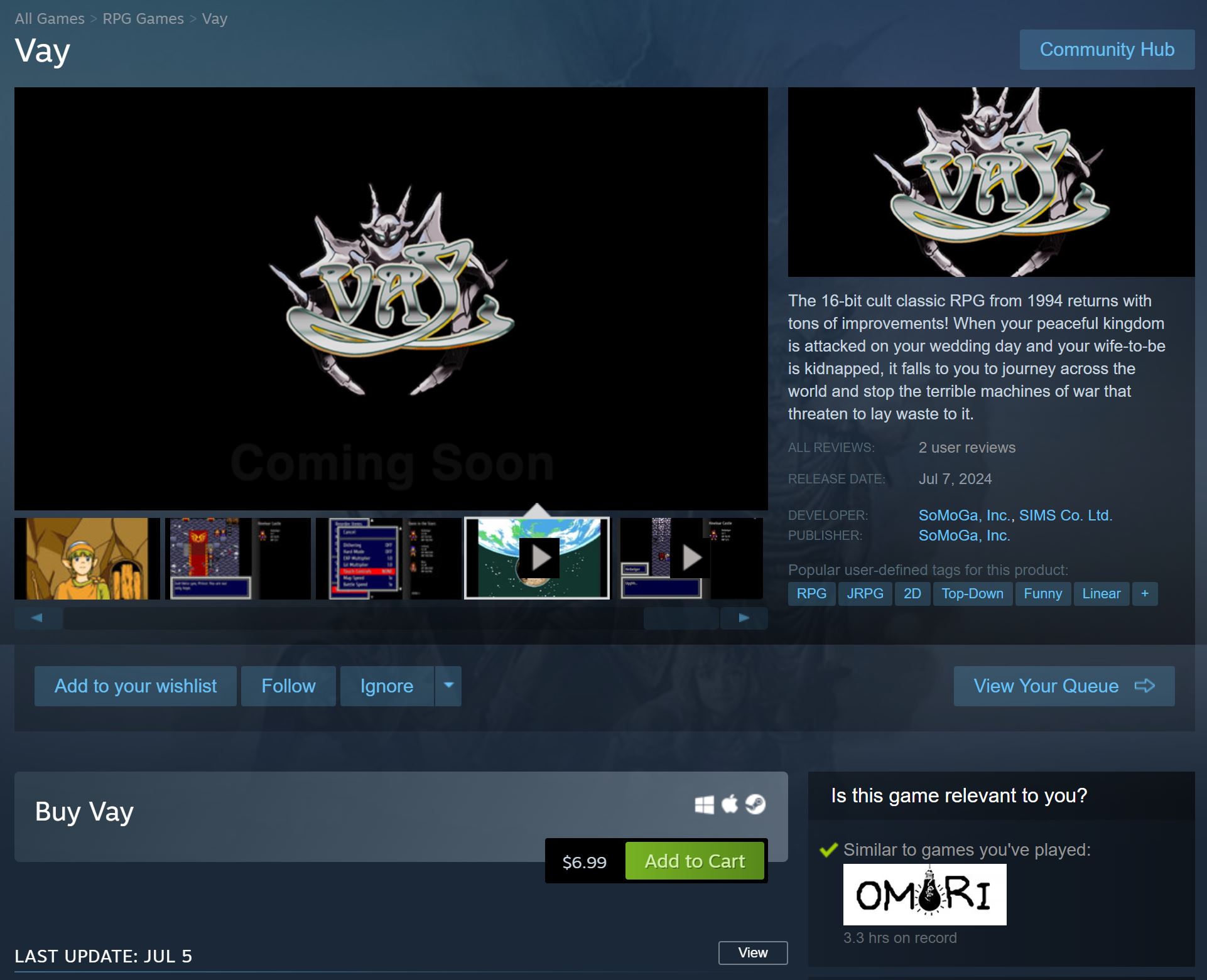
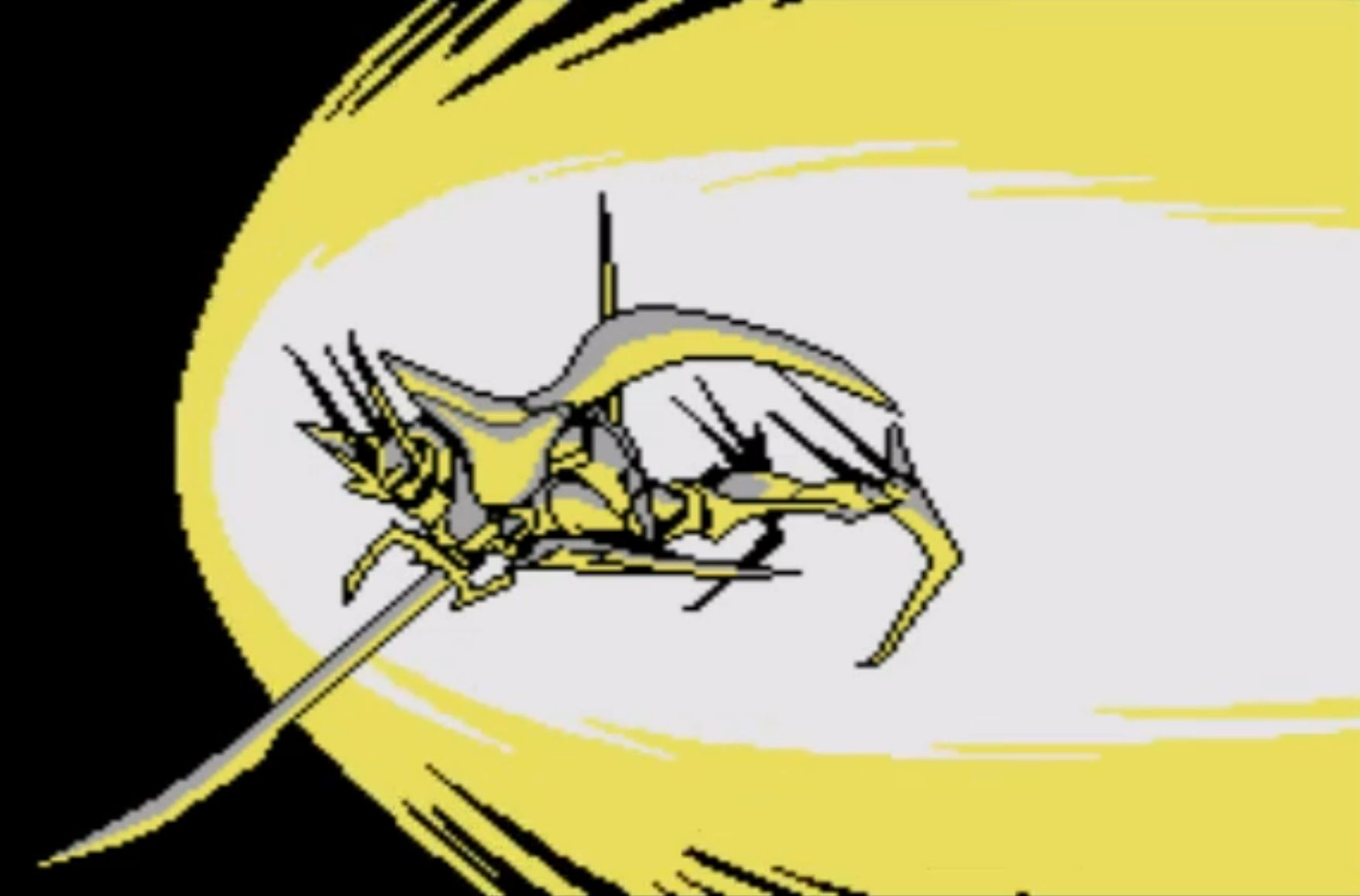
To commemorate *huge sigh* Vay Day...
- If you'd like to learn a little more about the circumstances of this game's production, Shaun Musgrave at Touch Arcade has you covered. Musgrave is quite possibly the best-played, best-spoken game writer out there, and his weekday column on new Switch releases (and Patreon) has become my most reliable source of gaming news.
- As I noted on Tumblr, one of the trailers functions basically as a showcase for the game's soundtrack - which was a good move, since it reminds you that Vay does, despite its faults, have some bangers: the overworld theme, the boss theme, the final (well, penultimate) dungeon.
- Speaking of that not-final castle: its organic horror provides the most memorable location in an aggressively nondescript game. It took years before I played FF5 and discovered its predecessor in Exdeath's Castle in FF5.
- I'll agree with those in the thread that announced tidings of Vay's revival in that a) HD fonts do not mesh well with non-HD titles and yet b) even the resuscitators of Vay chose a better, more-readable font than was used for the FF Pixel Remasters.
- One of the villain's lieutenants is an engineer named Betty June, who captains a ship called the Charnel. That was memorably badass to me. I'd always thought the name "Betty June" was a reference to something, but I guess not.
- Vay was my first exposure to the Hitchhiker's 42 joke, via an NPC. I thought Working Designs had written a pretty good joke. I no longer think that.
- Vay's voice acting (with exceptions, noted below) usually sounds very stilted and oddly-timed against the in-game anime cutscenes. That's not unique to the Working Designs version, though: the original Japanese release, oddly, has the same problem.
- Apparently, though SoMoGa just inserted the Harmony script for their version of Silver Star, they capitalized on Vay's lesser prestige to create their own Working Designs-style comedy localization. ...That sounds dangerous. Fans who think that kind of stuff is funny generally aren't good writers.
- One thing that is top-rate: the opening narration in the Working Designs version. It's excellently-written, perfectly timed to the visuals, and superbly-narrated. (Don't let the unique premise get your hopes up, though; Vay wastes most everything it's given. I remember how Robert Schmitz, author of the Shining Forth fanzine, lamented that it was a crime there was no animation once the hero reactivated that legendary armor. There is a part, though, where one of the medieval characters is talking about the dread "legendary" technologies they don't understand and mentions that the old world was destroyed by "New Clear Power," which I thought was pretty good.)
- Switching to spoilers for this last bit, so highlight to read: the most memorable event for many was the death of the child mage Pottle, who's shot through the heart with a crossbow by the evil emperor and subsequently falls off a bridge for good measure - which was indeed a gutsy move, killing the child character. The boldest and most memorable death for me, though, was not Pottle but the hero's love interest, Elin. I've wanted to write about it, but, particularly for such a visually-klutzy game, the presentation is uniquely memorable - Elin falls silently dead in the hero's arms, no sad music, no twee visuals - it's slow and respectful, but set against a black void and silence, with nothing answering his protagonist's bewildered, shocked, and then frenzied and anguished calls. He's screaming at Elin to fight the villain, fight for her life, and there's, with disconcerting realism, just nothing - she's already gone.
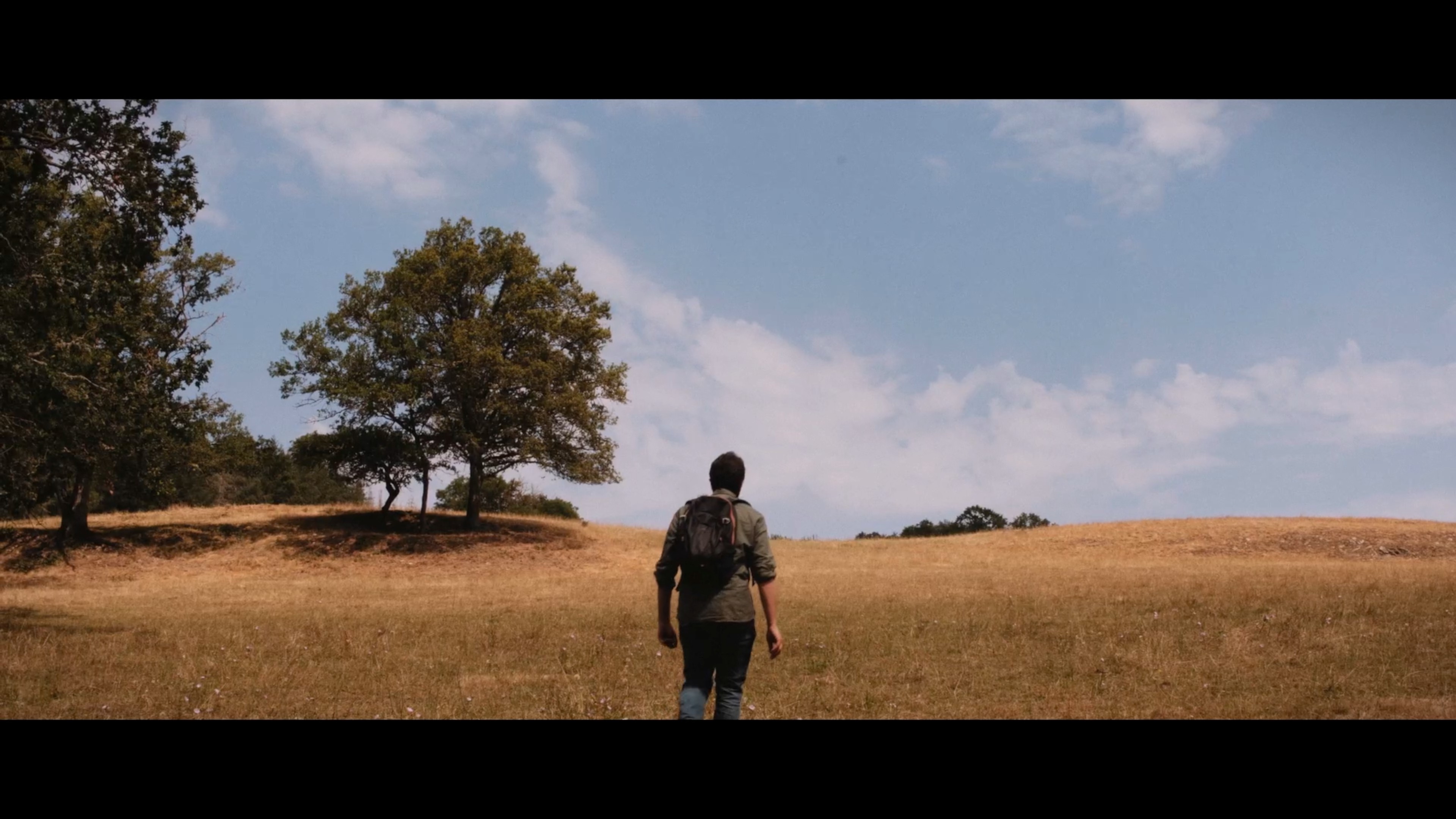
I am extremely busy. There are ten thousand things about which I wish I could blog. This game lasted 92 minutes and can be easily dispensed with, so it takes priority.

It's called The World After, and I got it a Steam sale or two ago. I played it because I was browsing a Steam sale recommendations thread but started feeling guilty about the massive amount of short games that I've bought but either haven't played or have left unfinished. I wanted a movie-like experience with which to relax one hectic evening, and according to How Long to Beat, this fit the bill, so off we go.
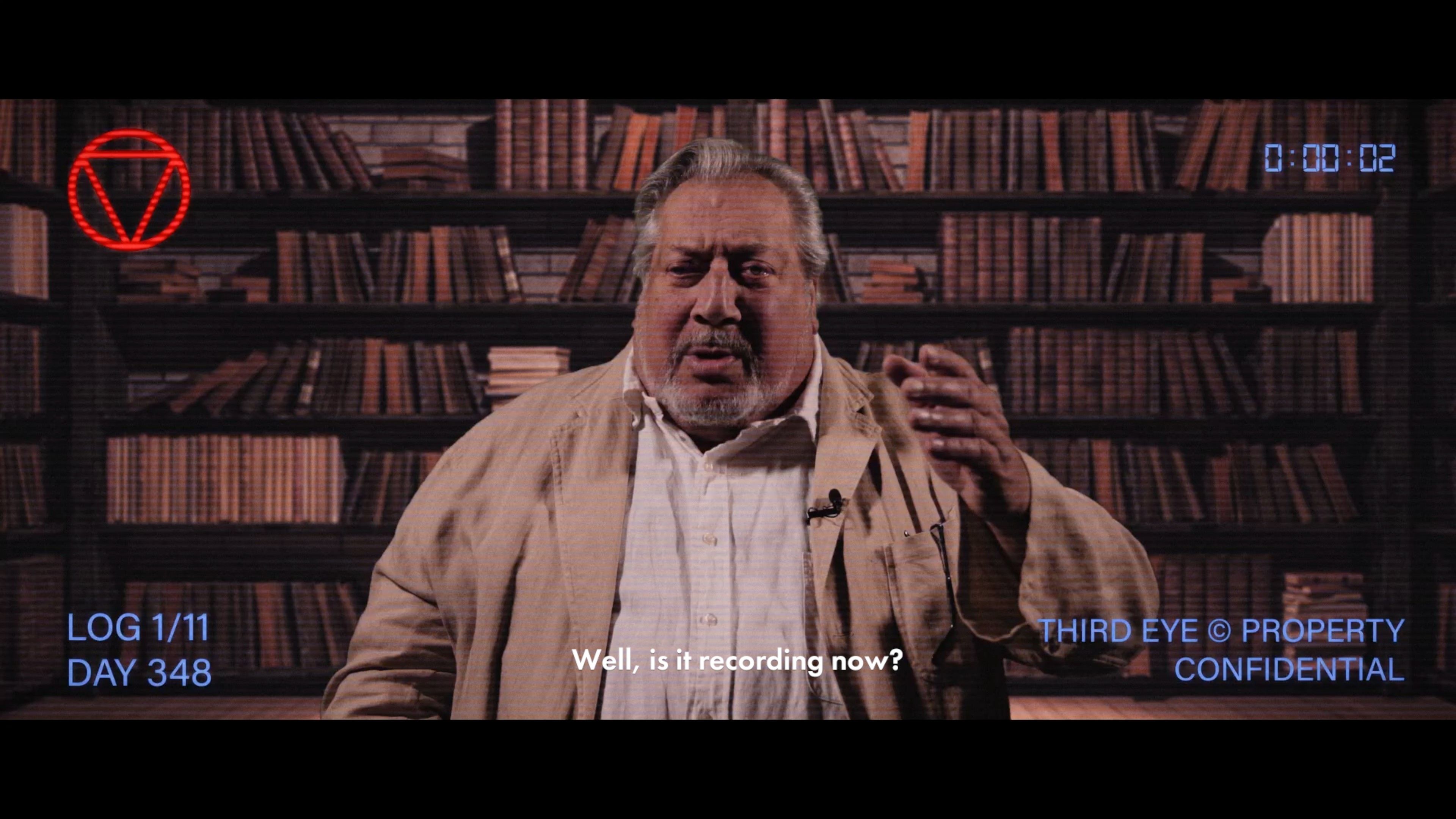
It's French. It's a pandemic game. A Parisian writer who's quarantined himself in the countryside is having nightmares about being caught in some kind of loop. Well, quarantine was like that. One morning, he finds a photo of a nearby castle slipped under his door with a note challenging him to come hither for no discernible reason, but having nothing better or suitably socially-distanced to do during the plague, off he sets.
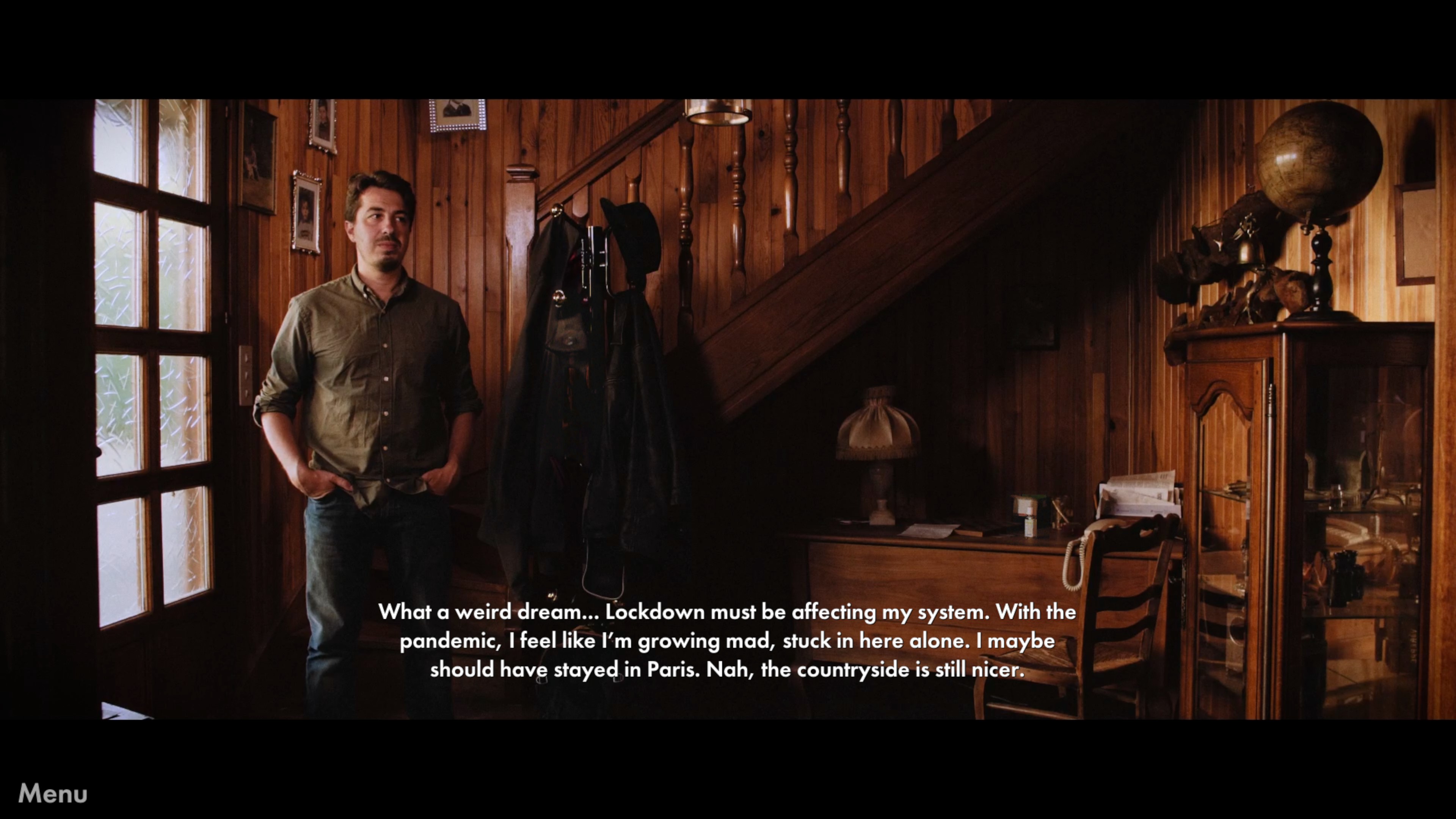
But even that is too much about the plot, as slight as it is, because the story's really kind of nonsense, and the little that manages to be coherent is wholly derivative. You're here for the presentation: smooth 4K FMV of a dude walking through the beautiful French countryside with minimal puzzle resistance.
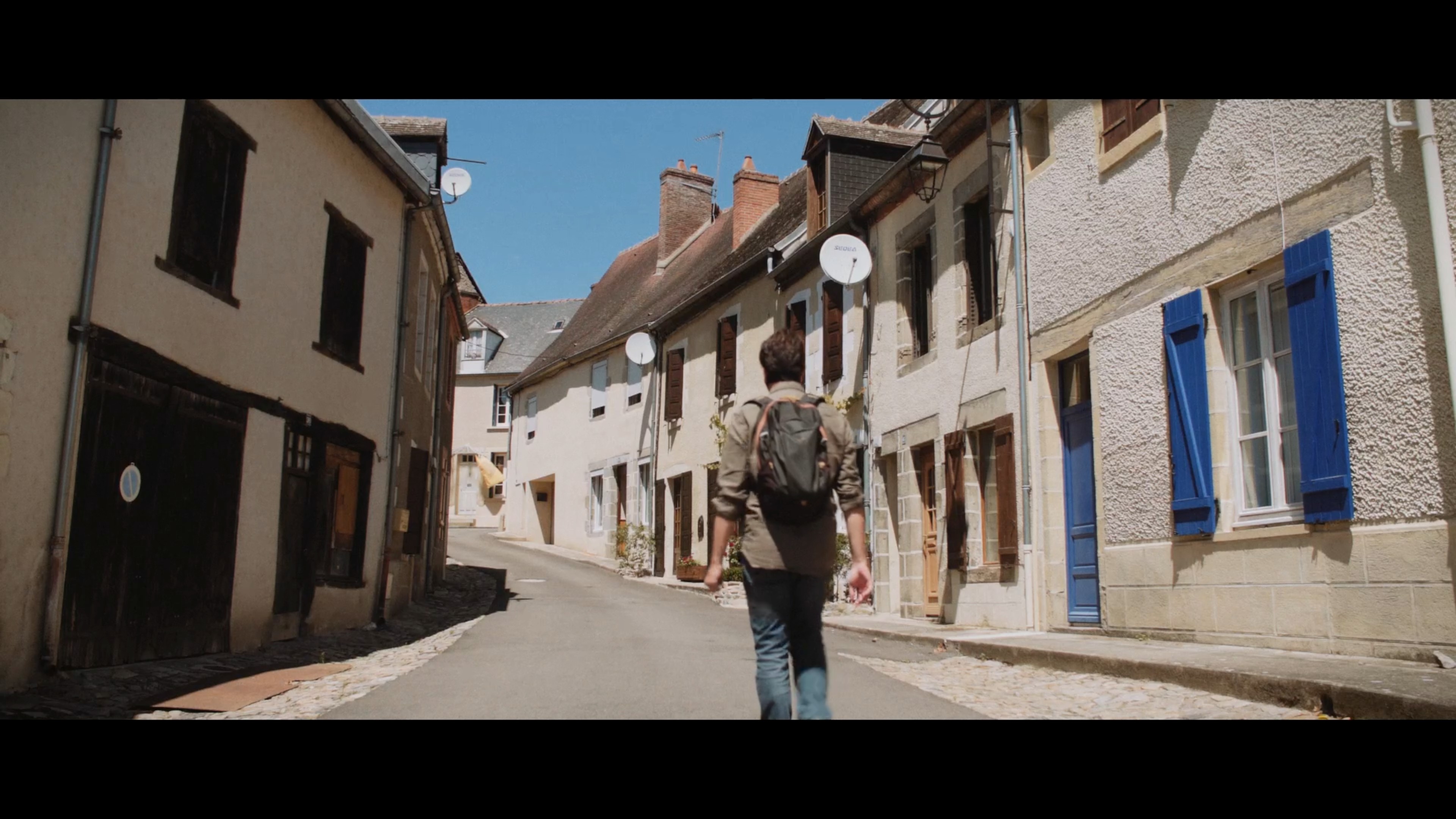
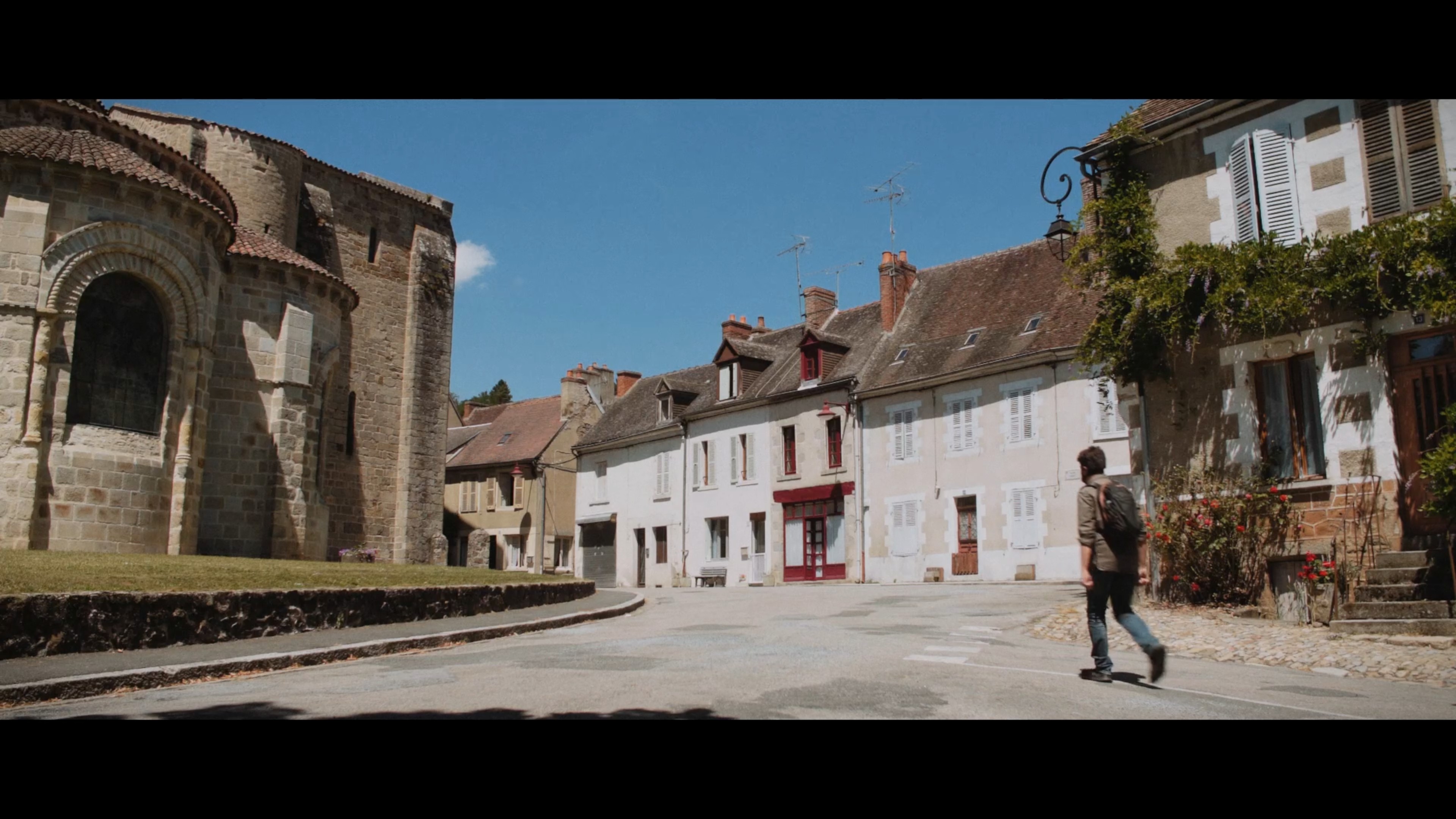



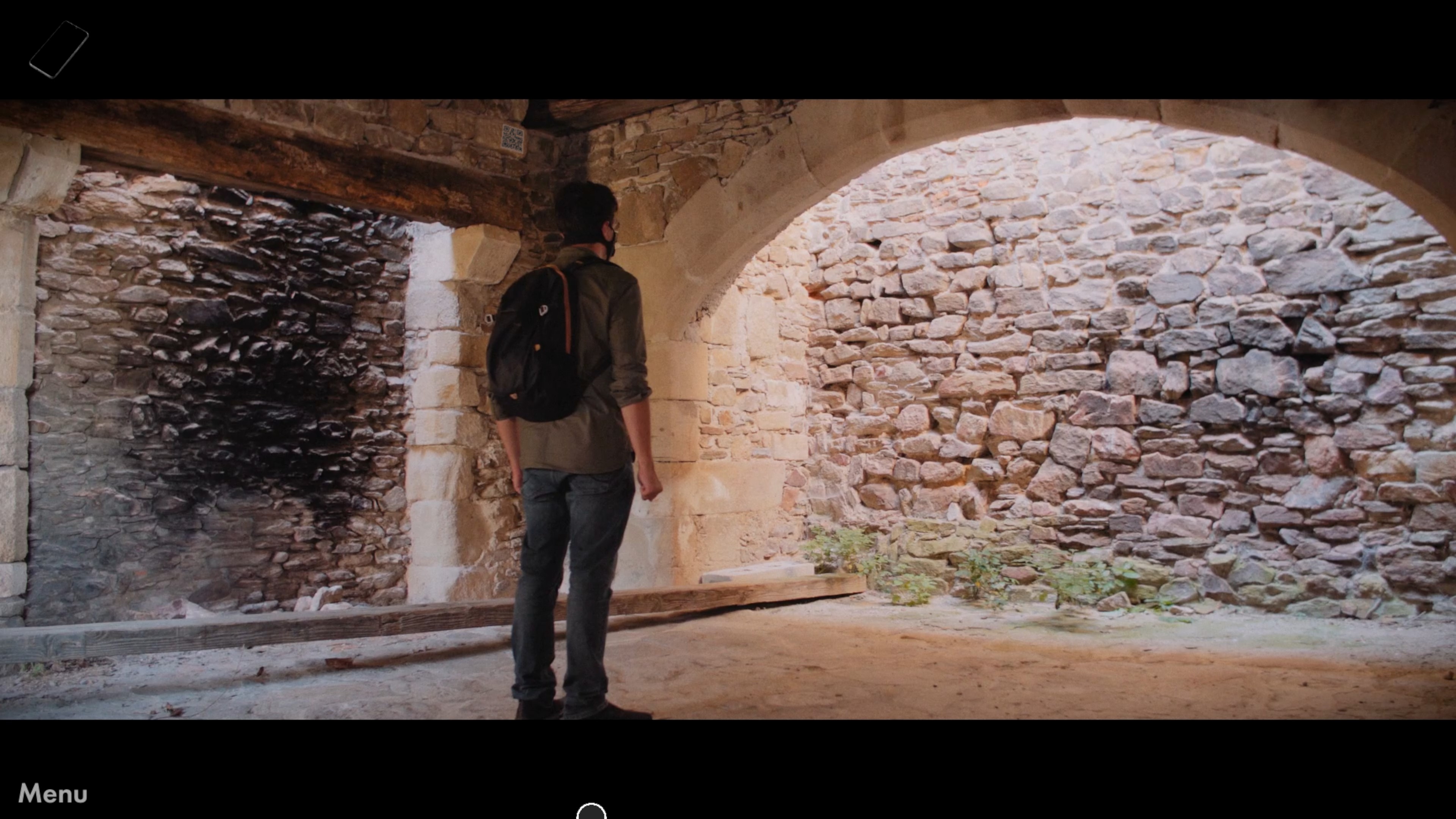
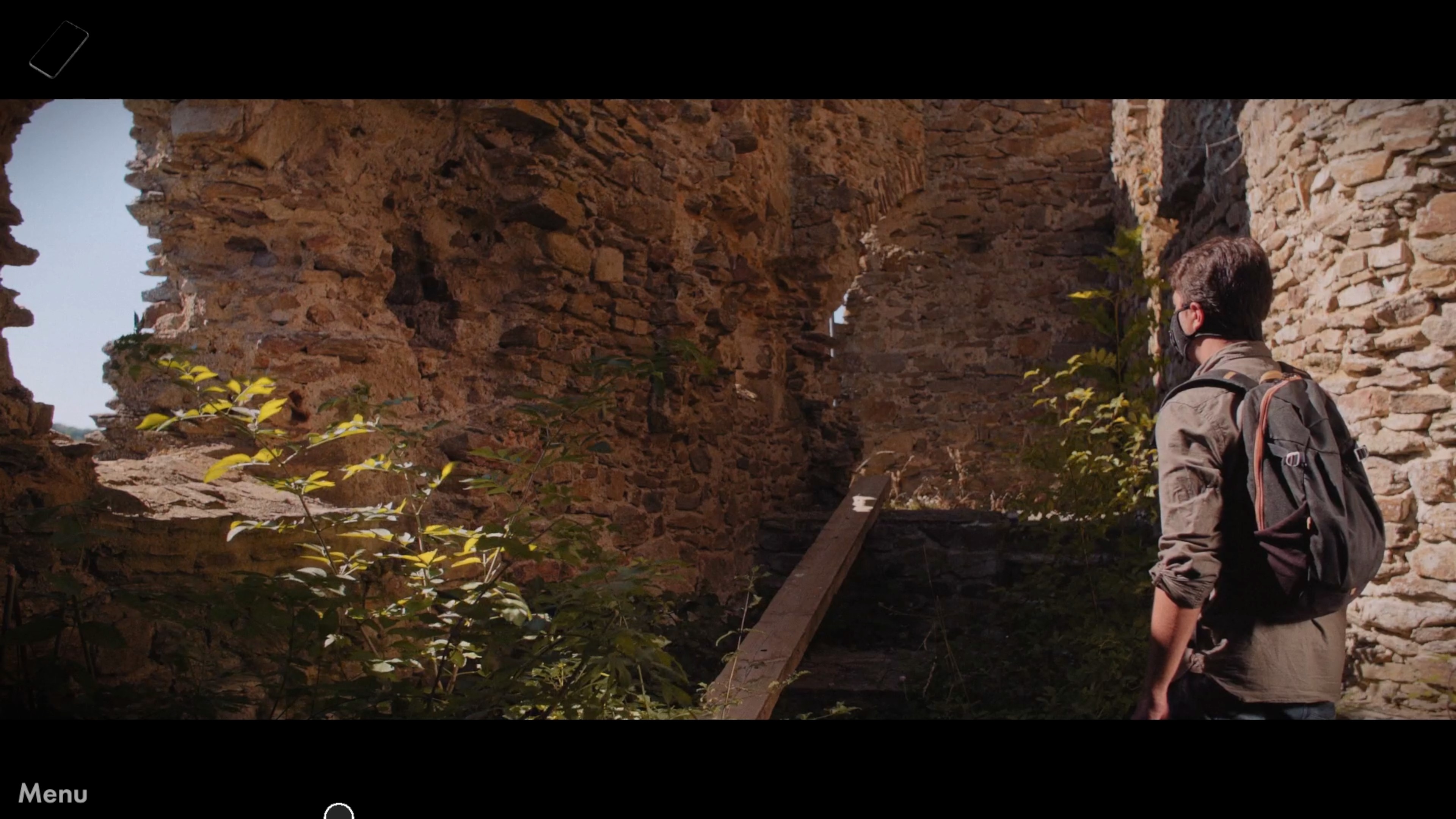
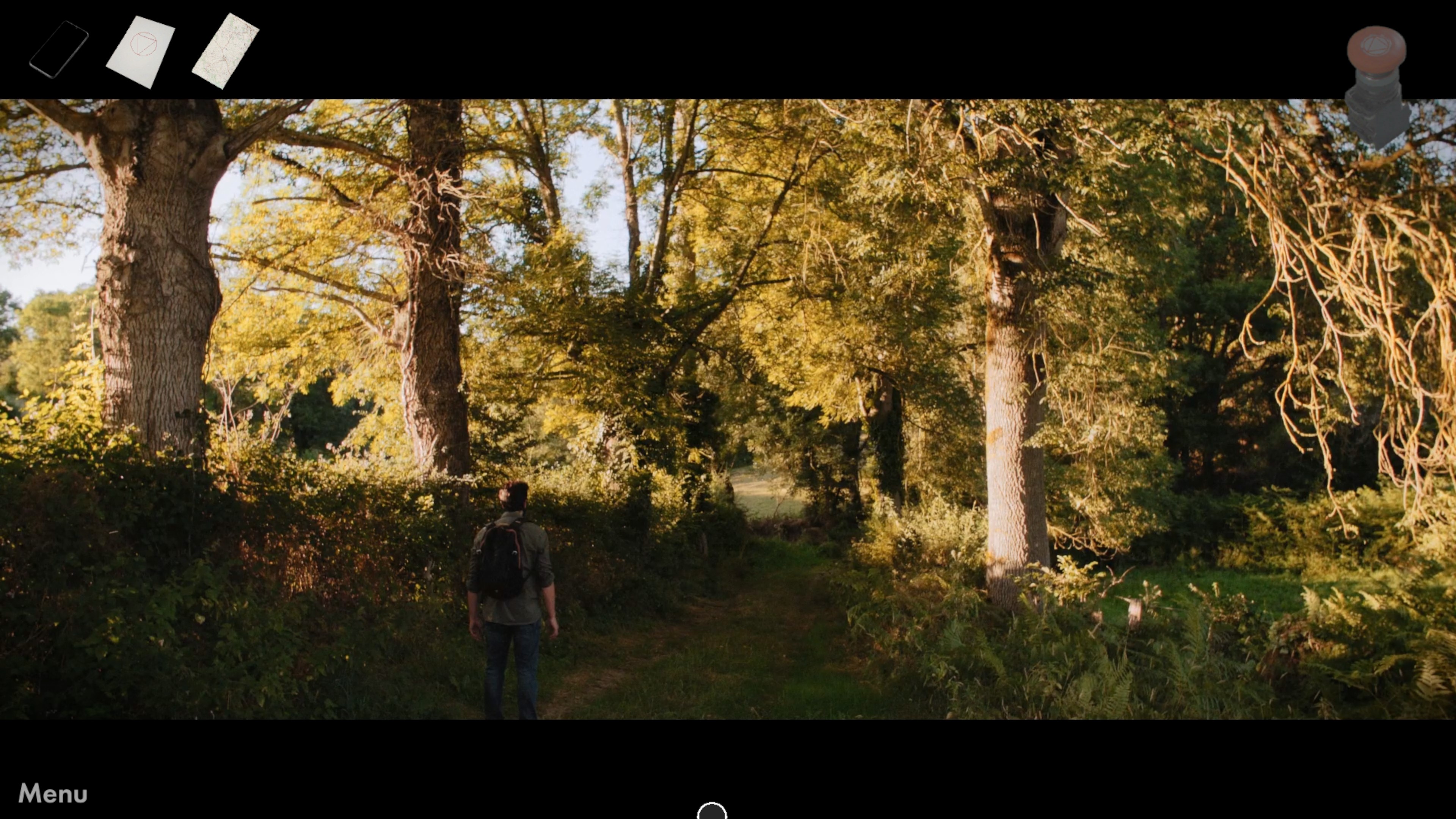
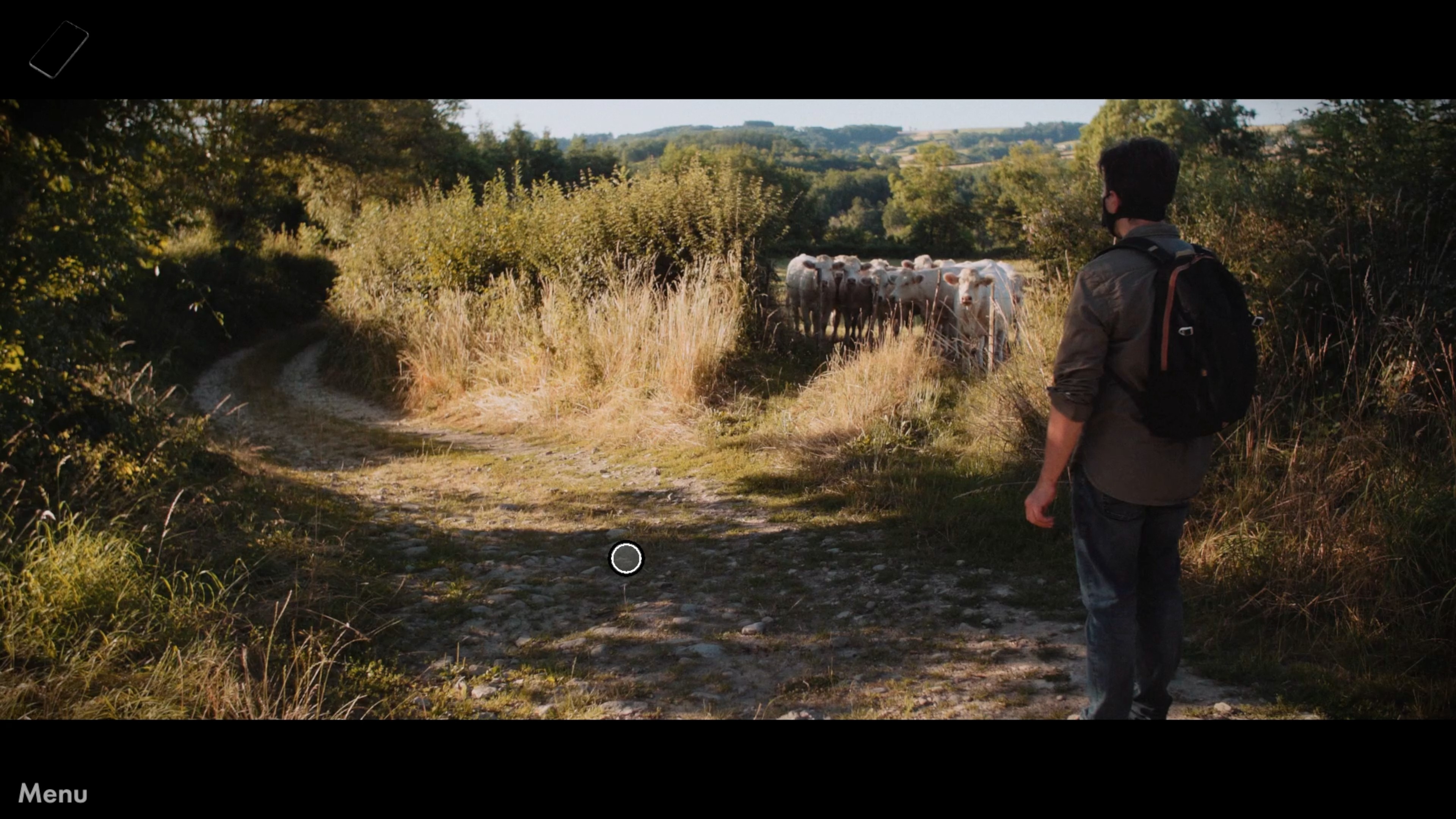
On that note, it delivers. I can't call it honest-to-goodness "good" in the traditional sense, but it's very pretty and admirable in an "I want to document my beloved home environment in an interactive format that others can experience" manner (see: the Carol Reed games). Sometimes, just wandering through a pretty environment with minimal frustration for a brief time is enough.
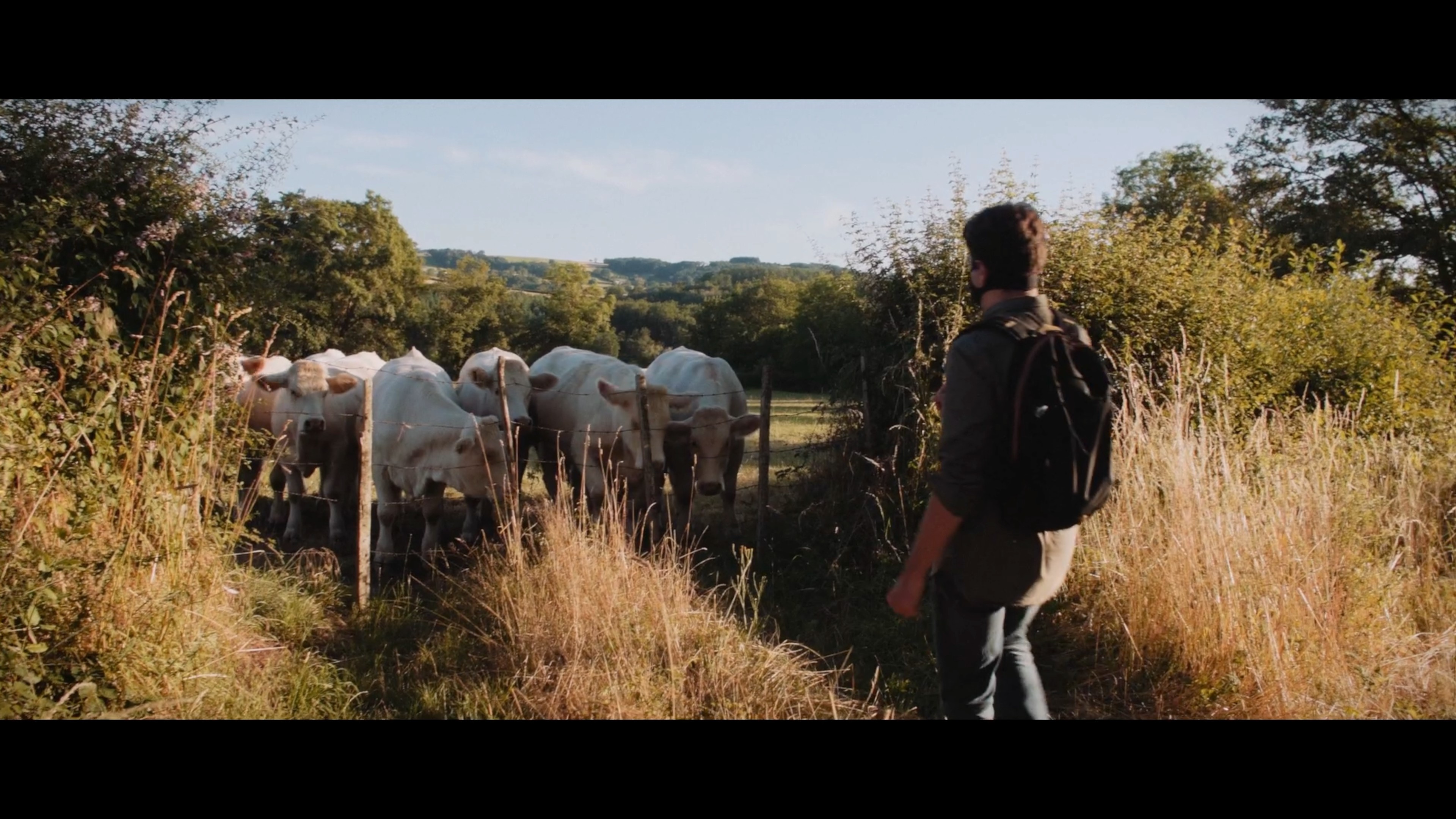
(Those cows run away when you approach them.)
With no meat on the narrative bone, though, this is more a game of moments.
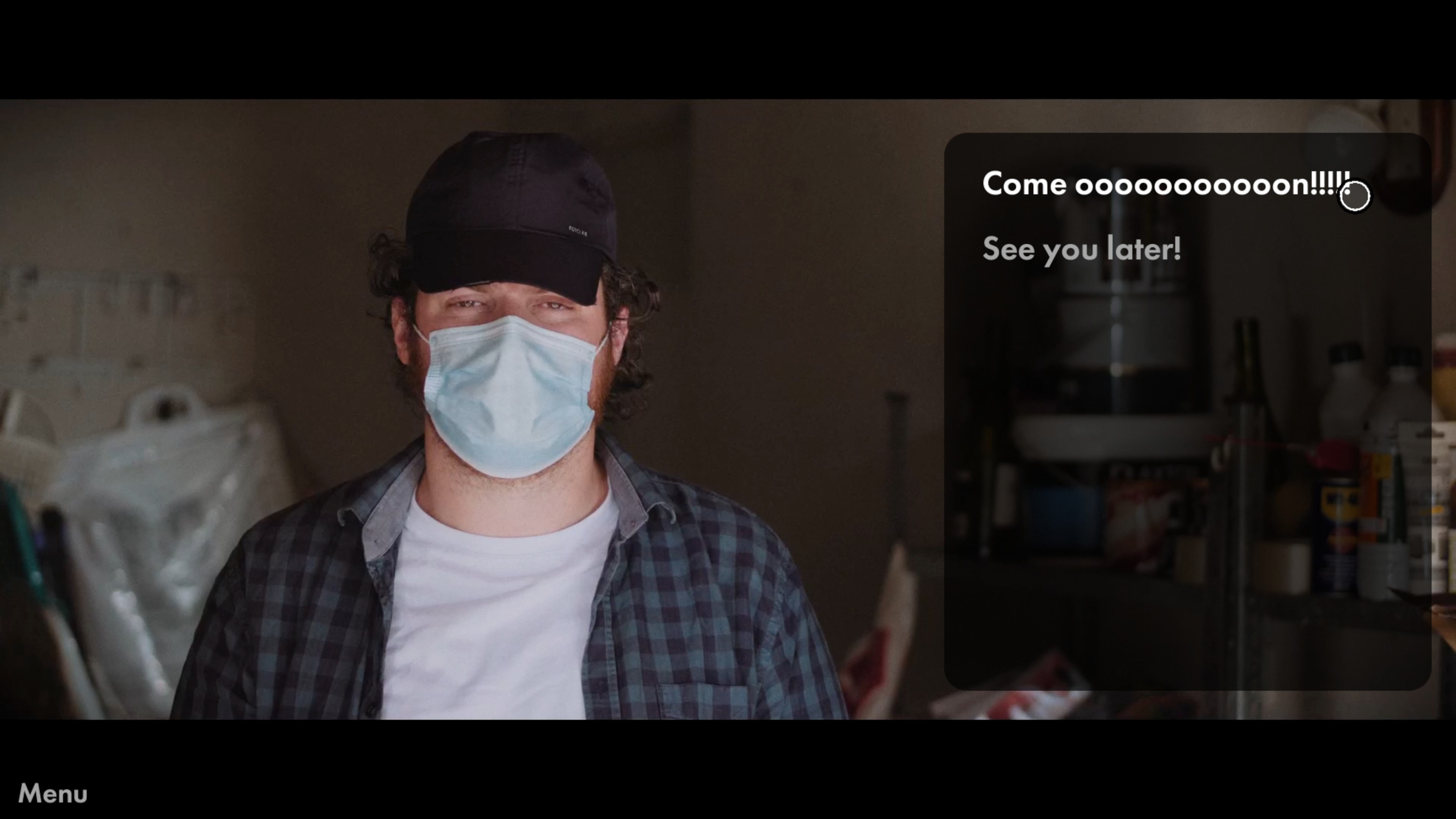
The quarantine setting means every cast member wears masks, which conveniently limits the need for lip-flap-matching in the English dub track.
(For this event, you also get five successive dialogue options that are variations of "Come ooooooon!" with more and more o's.)
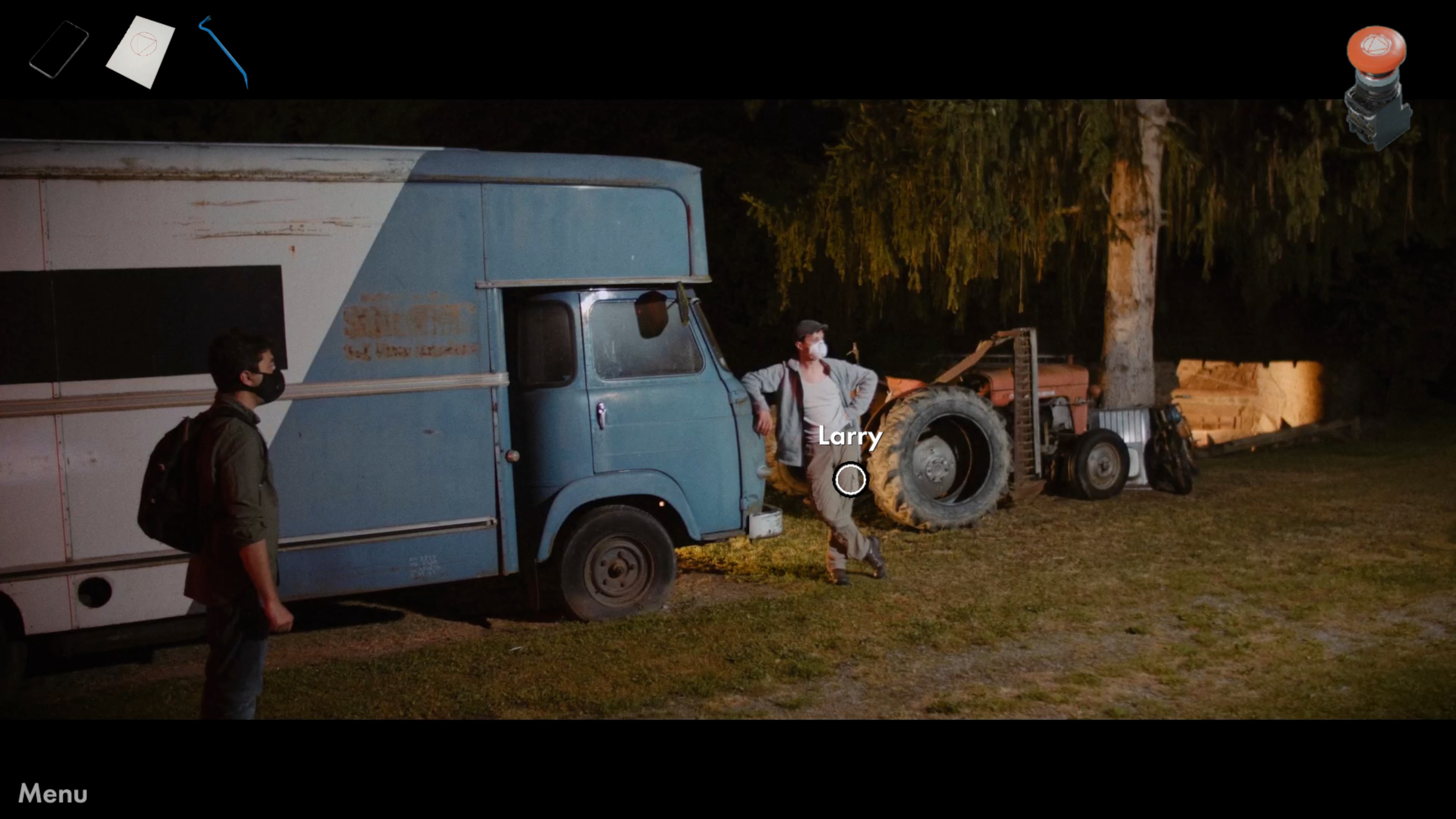
You make hand sanitizer out of aloe vera and a discarded bottle of vodka you find on the side of the road.
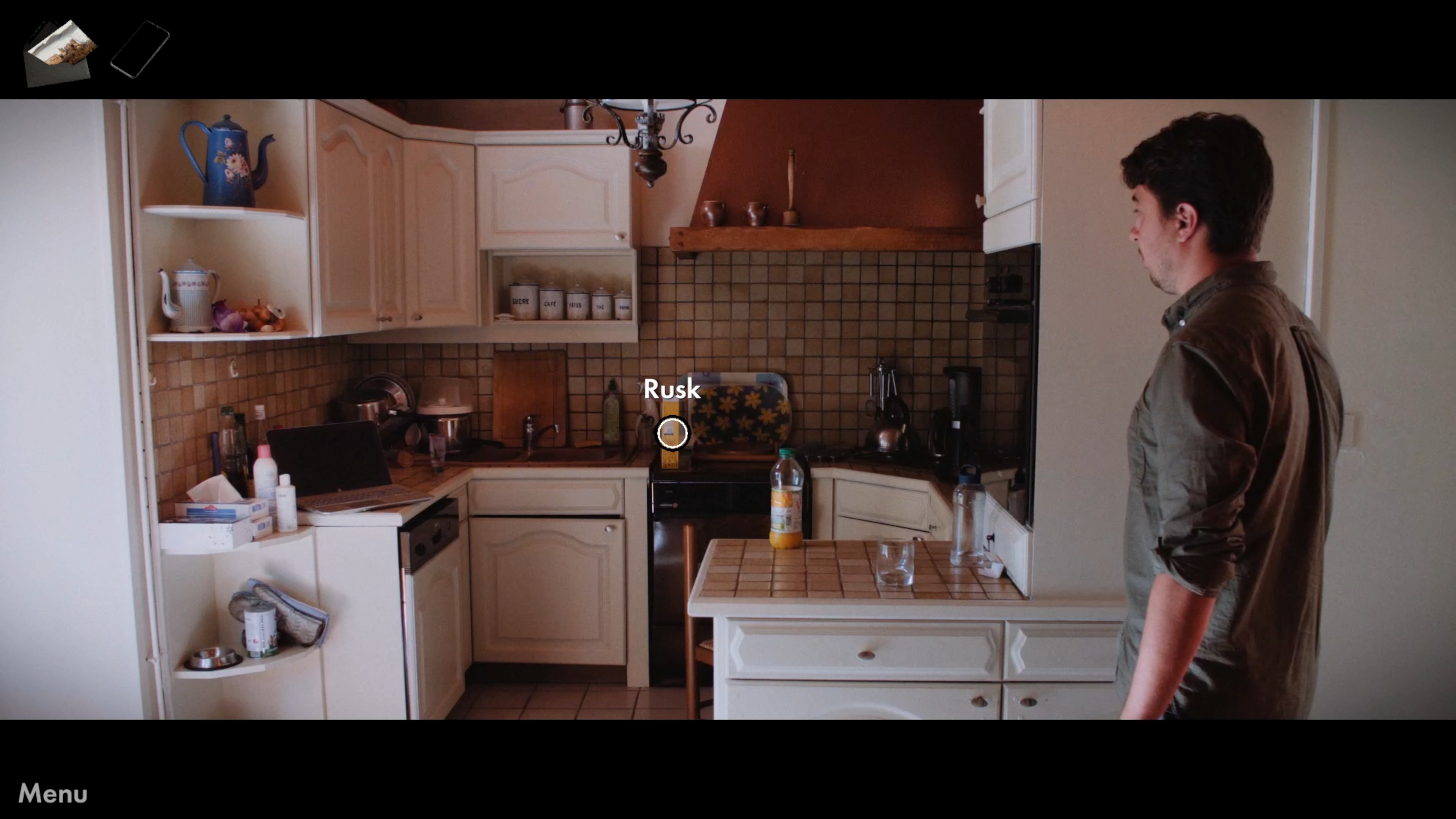
At one point, the main character can eat "rusk," which evidently is the UK term for something like crispbread but sure looks like graham crackers.
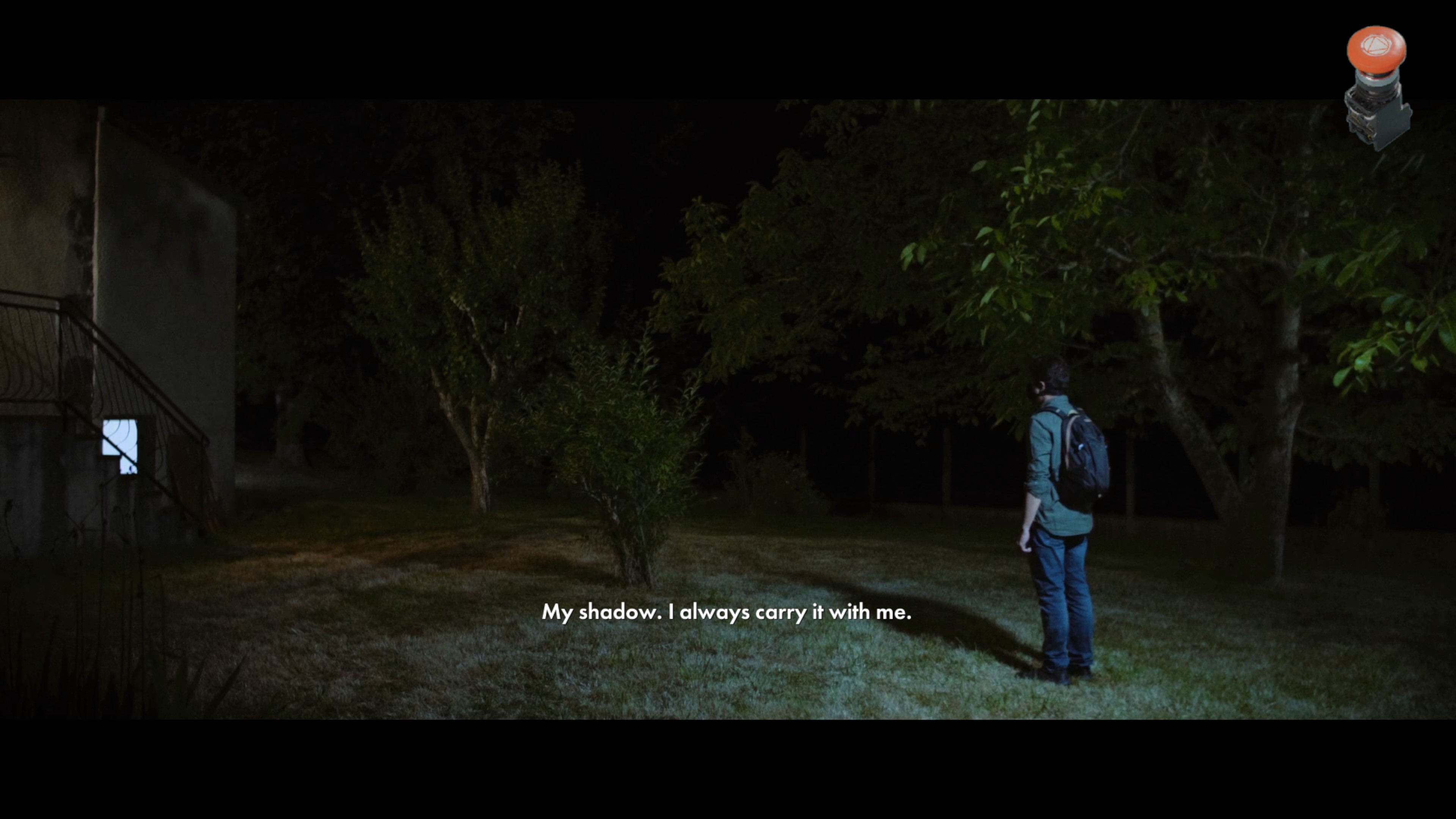
There's a Gabriel Knight reference, I understand, if you attempt to attack your shadow with your crowbar in this sequence.
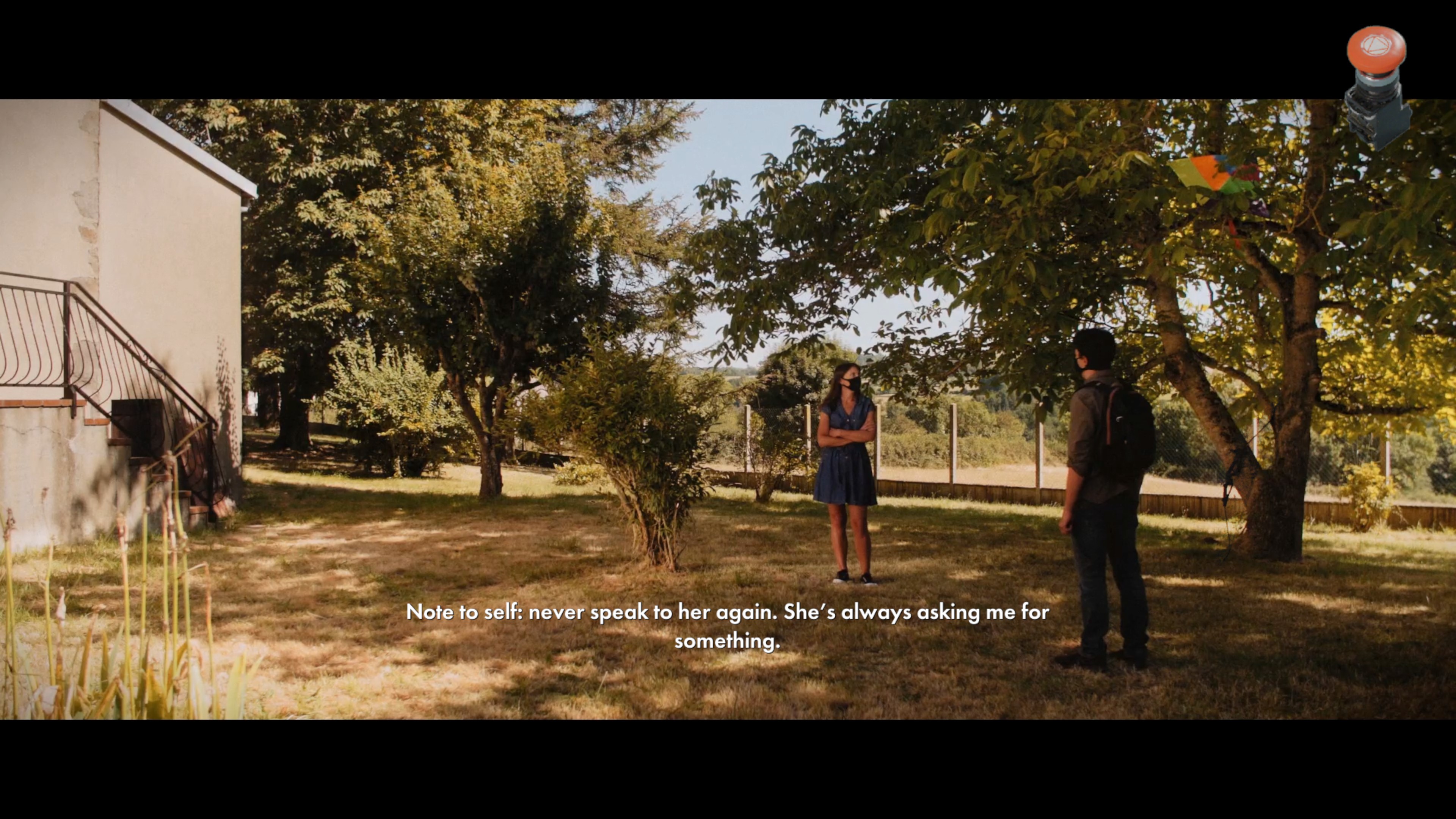
It also features - and this is kind of spoiling the turn in subject matter here, but it's noteworthy - a creature portrayed by an honest-to-goodness Halloween alien mask with light-up eyes like those compound work lights with numerous little bump-like lights inside. It's satisfying in the innocent fakey way 1950s monster movie props are.
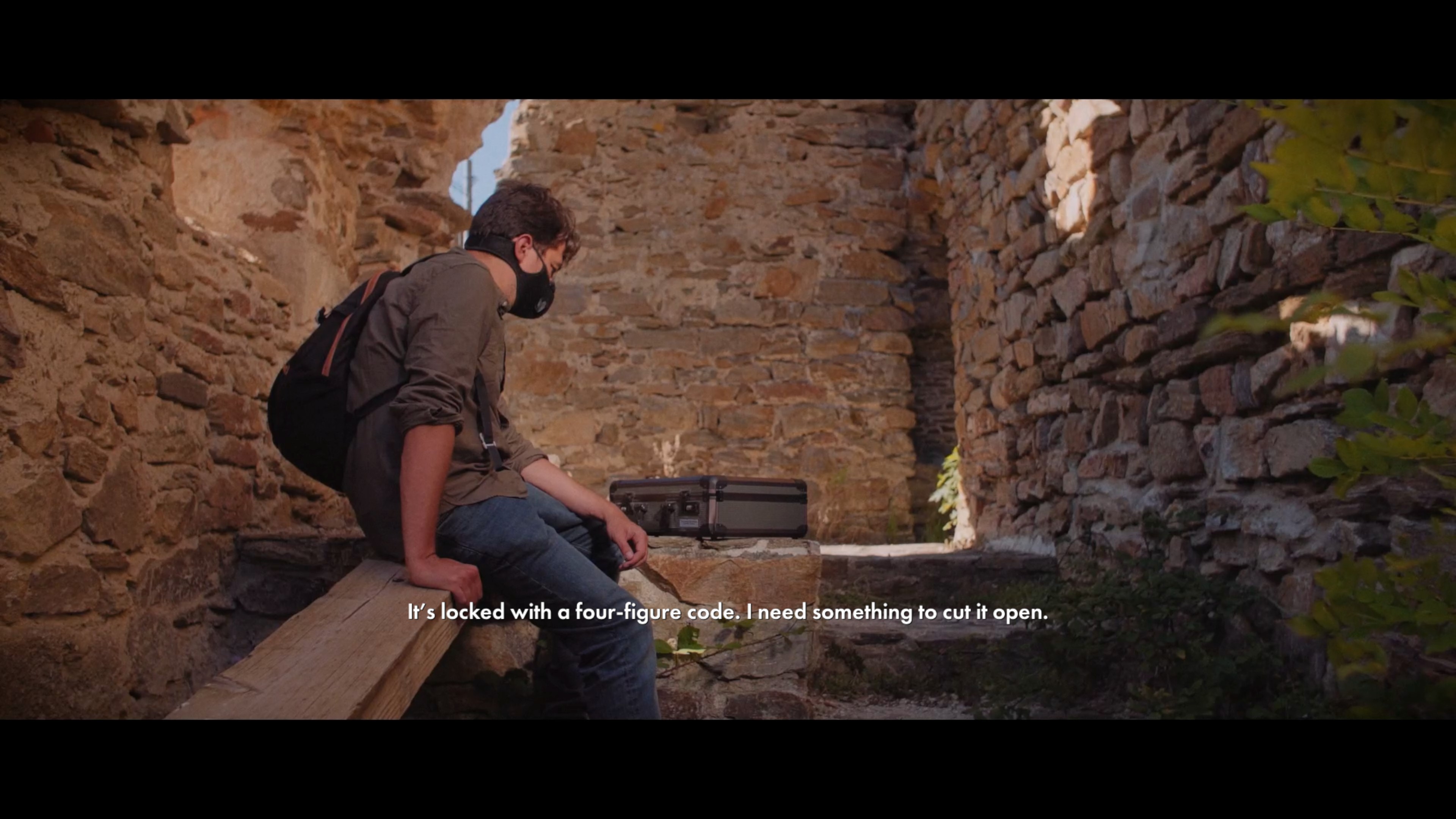
The sole determinant of whether you get the good or bad ending is whether you grab the gun in the above case early on or not. I, like any red-blooded American, grabbed the gun, as there was no immediate indication that being armed was a bad idea, as in Little Hope. This is a European game, though, and so firearms are not the answer.
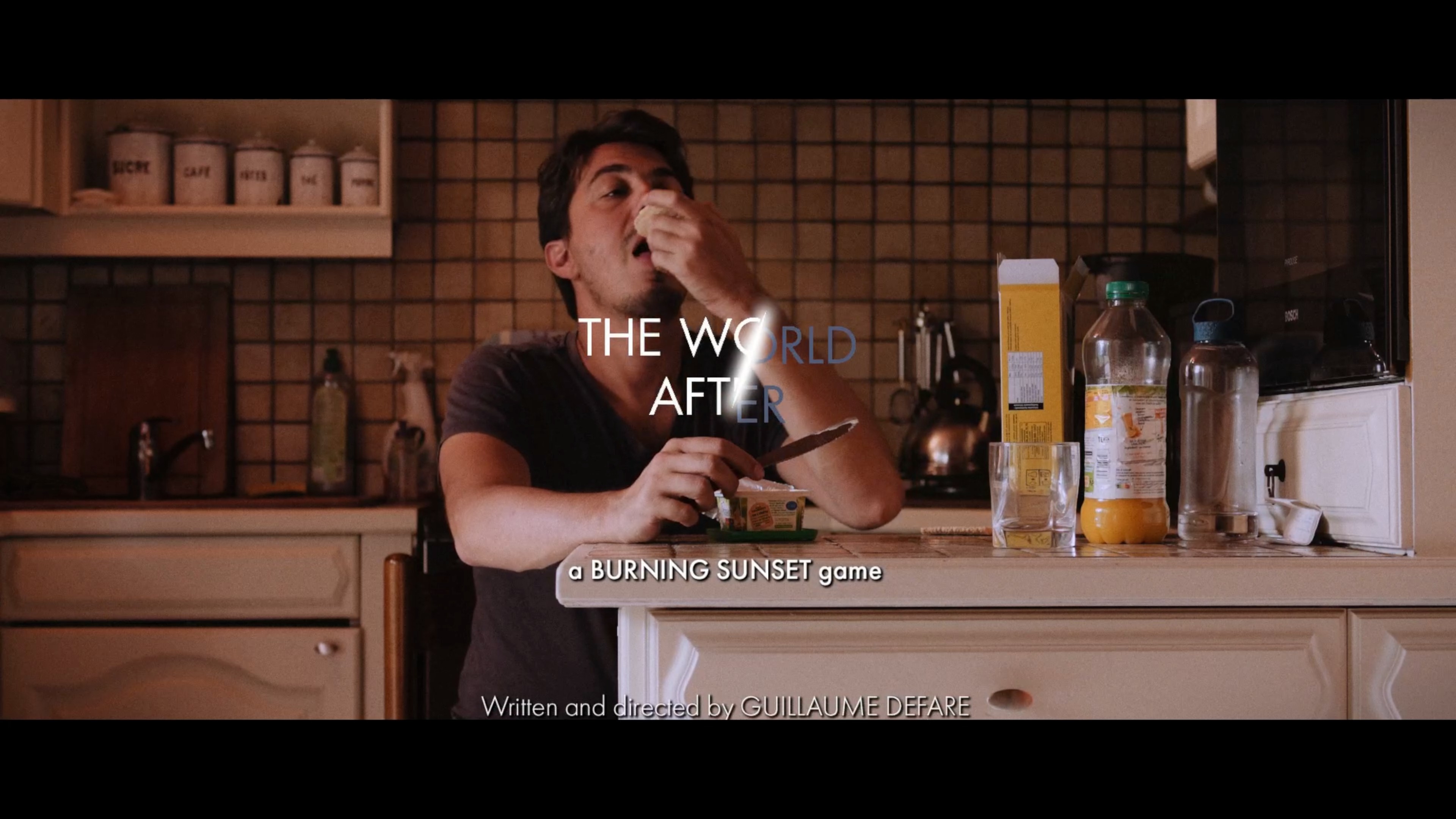
In the "bad" ending, though, instead of the non-resolution to the not-plot, you're treated to video of the main character back at home eating rusk/graham crackers and cream cheese. Which arguably is the better denouement.
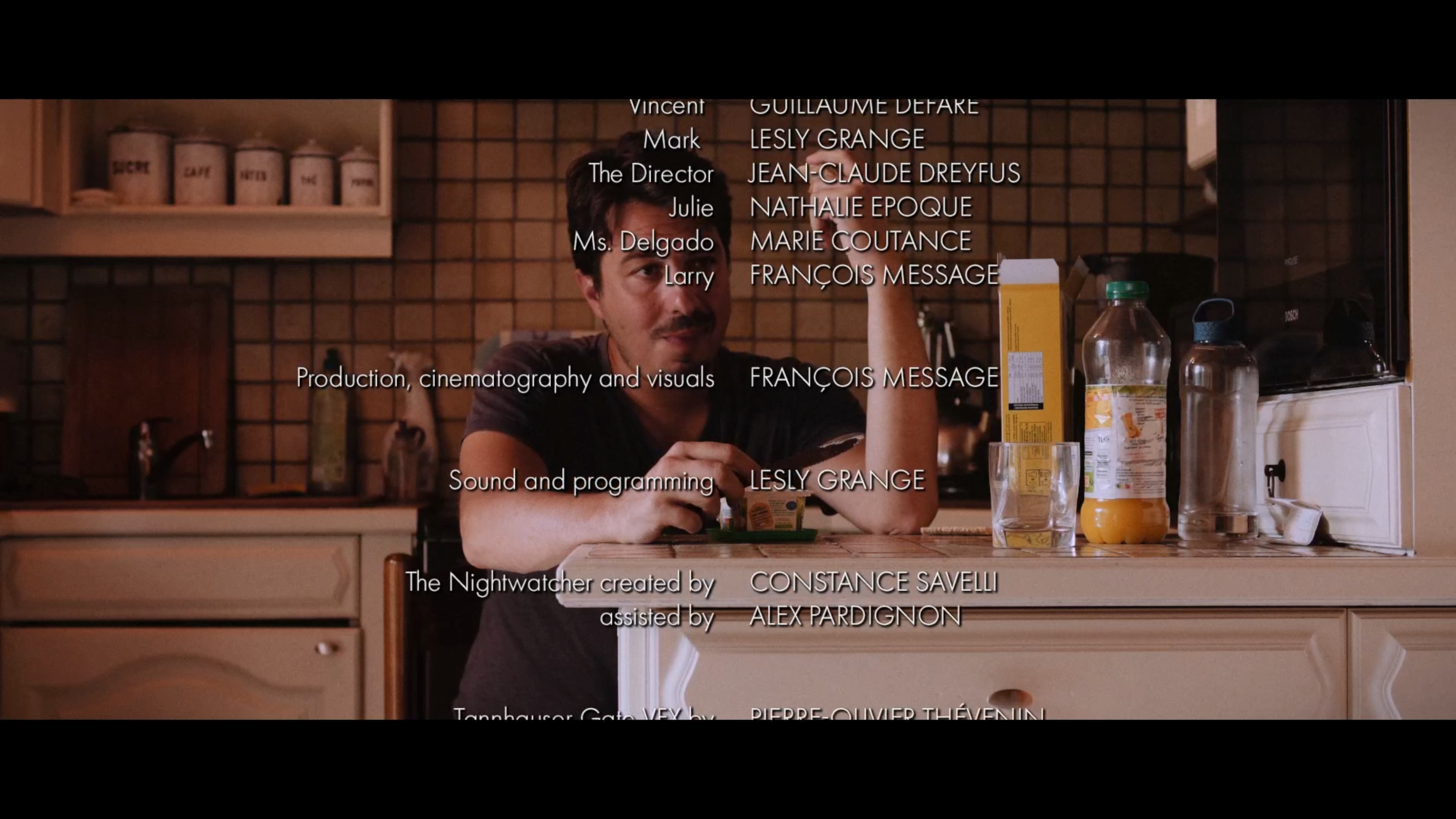
Jeff Gerstmann was doing his weekly NES ranking show today, and one of the games under review was Chubby Cherub, an obscure title where you're a demented-looking little angel going around avoiding cute dogs who shoot "B"s at you (to symbolize their little barks) while scarfing down food Adventure Island-style. The game's originally from Japan, so the food, of course, includes dango and rice balls. Naturally, they're not labeled as such in the U.S. manual, and while this is a predecessor to a long line of later properties adapting Japanese dishes as jelly donuts and hamburgers, well, does this look like a hamburger to you?

Even Alex Kidd back then had the good grace to replace the sprite.
Page 8 of 56
